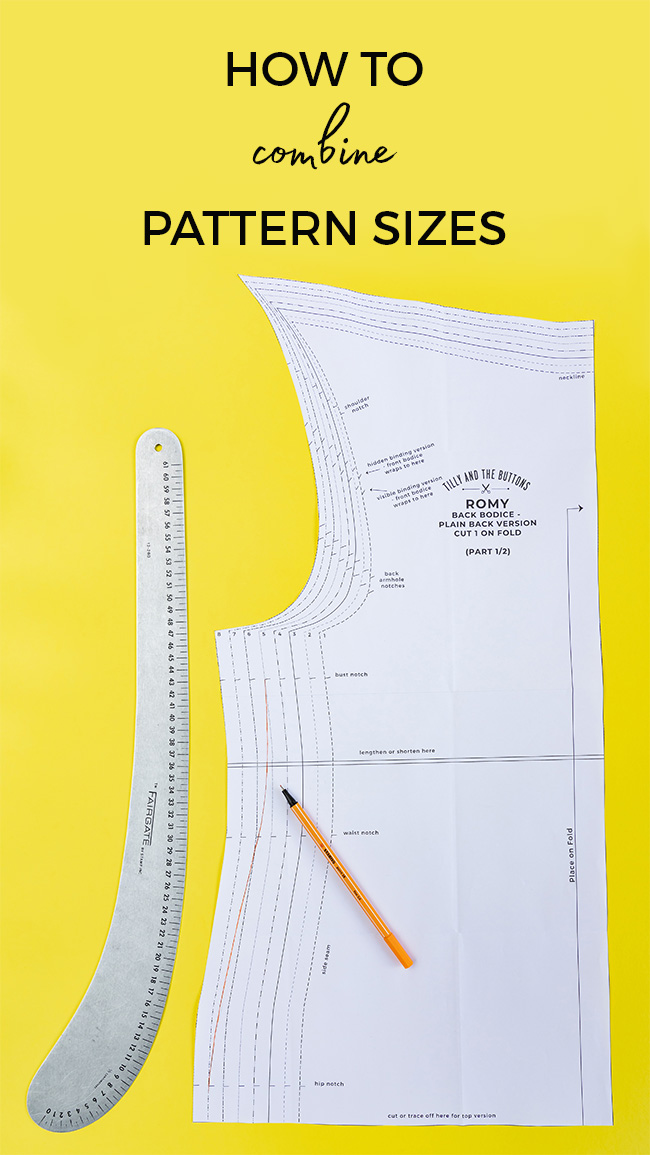
Do your bust, waist or hip measurements fall across different sizes? If so, you can "grade" between sizes to get a perfect fit. Hooray! It's Nikki here, Product Manager and self-confessed fitting nerd here at Tilly and the Buttons, and in this post I'm going to cover how to combine sizes on pattern pieces.
One of the best things about sewing is that you can create clothes that fit your unique body shape. If you have bust, waist and hip measurements that are different sizes, like me, you'll probably have stood in a clothes shop fitting room before, surrounded by a pile of clothes that are too loose on top and too tight across your hips, or vice-versa. Luckily, when it comes to making your own clothes, you can combine pattern sizes to make parts of the garment bigger or smaller to give you a truly bespoke fit.
When should I combine pattern sizes?
Now, it might be tempting to combine sizes for the bust, waist and hips on all your patterns, but depending on the fit of the garment you don't always need to do this.
If you're making a looser fitting garment or a garment that is looser fitting in some areas, you might not need to combine sizes at all. A looser fitting garment will have a lot of "positive ease", meaning the garment (or parts of it) will be much bigger than your body, so a few inches difference in that area won't make much difference to the overall fit.
So for example, if you're making something with a fitted bust and loose waist and hips, like the Indigo top and dress pattern, and your waist measurement is 2 or 3 sizes different to your bust, then you probably won't need to make any alterations here. The same applies to the hip measurement - the skirt is loose and flowy so a few sizes difference between your body measurements won't affect the fit of the garment. However, if your bust and waist span across more than 3 sizes you might want to consider grading between sizes.
On the other hand, if you're making a garment that is designed to have a closer fit, like the Ness skirt or Etta dress, you will want to grade between sizes at the bust, waist and hip, where applicable, as there is much less ease in these areas.
Please do bear in mind though, if your bust measurement is particularly smaller or larger than the body measurement of the size you have picked, then you might need to do a bust adjustment, as well as combine sizes. Check out our bust adjustments post (coming soon!) for more info!
Most sewing patterns will list the finished garment measurements in their instructions, so if you're a bit unsure whether you need to combine sizes, comparing them against your body measurements will help you decide :)
General info about combining pattern sizes
OK, so you've decided that you need to combine pattern sizes, but there are a few things you need to know before you get stuck in!
Most patterns will have notch markings on them signifying where the bust, waist and hip should sit. If a pattern doesn't have them, you can hold up the pattern piece to your body to get an idea of where they should be. You can use these notches as a start and finish point and grade between them.
When combining pattern sizes, it's very important that you make sure they will match the pattern pieces that they are joining. So for example, if you are making a dress and have graded between the bust and the waist, make sure the waist size is the same for both the bodice and the skirt! If you are sewing something with a front and back bodice, front and back skirt etc. make sure you have done the same adjustment to both pieces. The same applies to facings - if you have graded a piece that will join it, make sure it matches.
The first diagram below shows how you combine sizes on a pattern piece that has a straight side seam, and no dart. If you are combining sizes on a curved seam, it's exactly the same principle but you'll want to use a french curve, pattern master or a steady hand to draw a smooth curved line, instead of a straight one. The Jessa fitting post has more deets on how to do this is you fancy having a look. Later on in the post, I'm also going to cover how you combine sizes on a bodice that has a bust dart.
Ready to get stuck in? let's do this!
Combining sizes for an un-darted seam
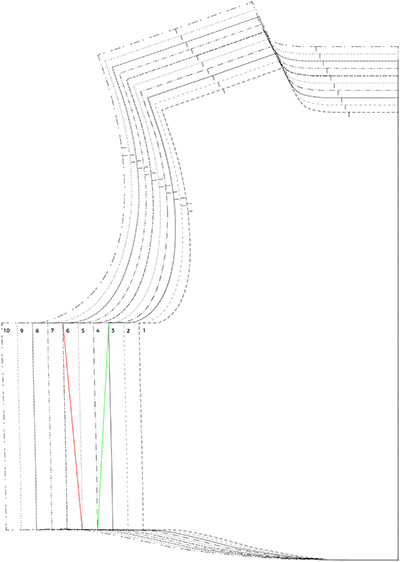
If your pattern piece is more curved, draw a curved line between the sizes using a pattern master, french curve or by hand.
It really is as simple as that :)
Combining sizes on a darted bodice
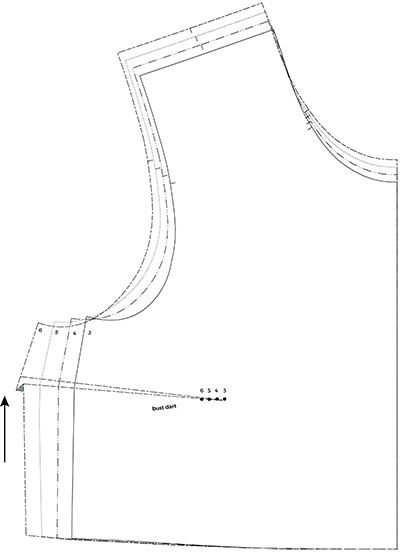
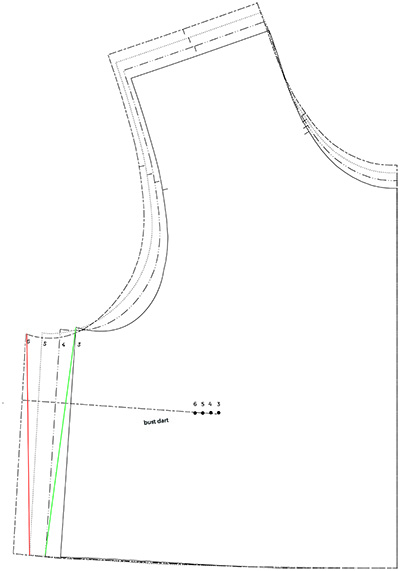
To combine sizes on a front bodice with a dart, we need to temporarily fold out the dart to alter the side seam. Don't worry, it's super easy to do this!
Fold the bottom leg of the dart in your bust size up so it meets the top dart leg. This is a bit tricky to do on paper and will make your pattern piece stick out. The most important bit here is making sure the dart legs meet up on the side seam. Temporarily tape the dart together so it doesn't slip out of place. Draw a straight line from the top to the bottom of the side seam in your desired sizes.
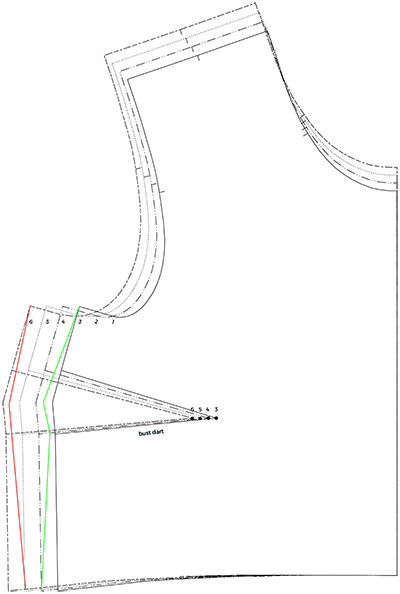
That's it for today! In the next few blog posts, we'll be covering bust adjustments for a darted bodice, and some shoulder adjustments so don't forget to keep an eye out for those.
If you liked this post, you might like How to lengthen or shorten a sewing pattern.
